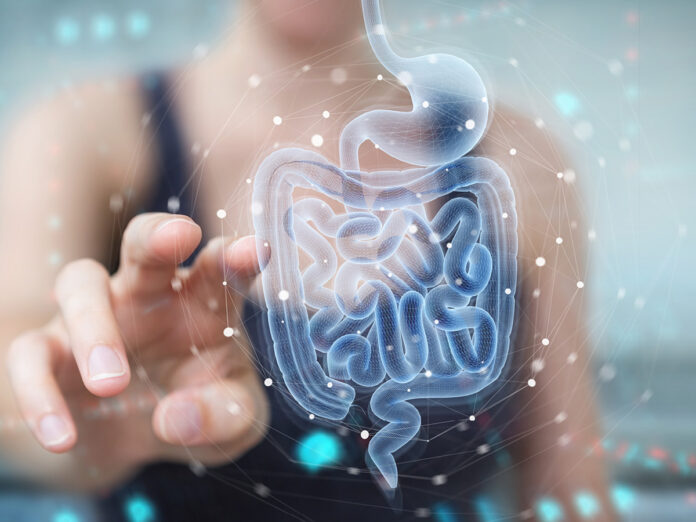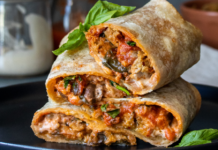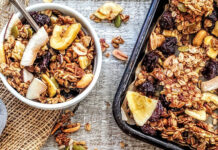
I consider the Big Three of food sensitivity are constipation, celiac disease, and gallbladder dysfunction. If you suspect you have one of these, your treatment needs to address that issue first. Even though irritable bowel syndrome (IBS) is the most common cause of food sensitivity, I consider these the Big Three because they are frequent causes of food intolerances, they’re highly treatable, and once you treat them, you’ll find that your food intolerances will improve dramatically. Let’s dig into them and some of the other causes of food intolerance that you should be conscious of.
Constipation
The number one cause of gas, bloating, and food sensitivities in my clinic is constipation. It’s incredible how many people have constipation as the genesis of their problem and don’t even realize they’re constipated. If you poop every day or even several times a day with diarrhea you could still be constipated! Constipation isn’t defined by the frequency of bowel movements. Instead, it’s the manifestation of symptoms or digestive disruption caused by inadequate evacuation of stool.
The solution is to establish rhythm. Your body thrives on rhythm. When we are constipated, we are out of rhythm, out of balance. We need to get things moving once more and get into that flow state where bowel movements are effortless, complete, and, frankly, enjoyable. I am being totally serious. Having a good, healthy bowel movement absolutely should be one of the highlights of your day! You should look forward to it and feel satisfied afterwards. If you don’t, we have work to do.
Celiac Disease
Celiac disease is an inflammatory, immune-mediated condition in which the immune system becomes activated when you consume gluten. In nature, gluten is a protein found in wheat, barley, and rye. But in the real world, where most people don’t really eat whole grains, gluten is, well, everywhere: most processed foods, deli meats, soy sauce, make-up, and many prescription drugs. Potatoes are inherently gluten-free, but if your restaurant serves up fries prepared in oil that’s touched gluten, then they’re contaminated.
Celiac disease is a genetically motivated condition (if you don’t have the gene then you can’t have the condition) and can manifest in several different ways. Classically there’s diarrhea, bloating, gas, and abdominal pain after a meal but it can also present with constipation. Weight loss happens with malabsorption. Iron deficiency anemia can set in and cause fatigue. Outside the intestine, celiac can present with arthritis, dental enamel defects, osteoporosis, elevated liver tests, neurological symptoms, and even infertility. Lastly, I’ve diagnosed celiac disease in people who are completely free of symptoms but have a first-degree family member with celiac disease. The most important thing is to consider celiac disease as a possibility for the symptoms. Open your mind to whether it’s possible. If it is a possibility, then you must be appropriately tested for it.
Gallbladder Dysfunction
The gallbladder is a small little sack that sits under your liver in your right upper quadrant. Its job is to store liver juice called bile, which helps us to digest fat in our diet. When we eat a meal, particularly a high-fat meal, our gallbladder squeezes to release this digestive juice down a series of tubes, almost like a water slide, called the bile ducts. The bile splashes down into the small intestine, just after the stomach, where it mixes with food and goes to work.
Here’s the issue. There are a million and one ways that the gallbladder can cause symptoms. The classic textbook. The gallbladder can cause pain in the middle upper abdomen, right upper or right lower quadrant, or the back on the right side. I’ve even seen it cause chest pain, similar to acid reflux. Naturally, if you have chest pain, you need to make sure your heart is safe first. The gallbladder will not cause left-sided pain, whether front or back. So if the pain is on the left side, it ain’t your gallbladder!
The gallbladder isn’t just about pain, though. In fact, sometimes there’s no pain at all. It can also cause chronic nausea, gas and bloating, and discomfort after meals. It’s for this reason that I’ve got the gallbladder on my mind as a possibility for anyone suffering from food intolerances or who has upper GI issues.
There’s no silver bullet that will fix gallbladder problems, but evidence suggests that a whole food, plant-centred diet rich in fibre, plant protein, and unsaturated fats reduce our likelihood of having gallbladder dysfunction. Coffee has also been found to be protective, which I personally celebrate. On the flip side, gallbladder disease is more common with increased intake of saturated fat and dietary cholesterol from red and processed meats and eggs or sugar and other ultra-processed grains.
Beyond the Big Three
The Big Three are not actually the three most common causes of food sensitivity, but they are the three that I always make sure we rule out first because, if present, they can be quickly fixed and food sensitivity will improve dramatically when that is the case.
However here are a few other conditions that could be the genesis of your symptoms.
Acid-related issues: Otherwise known as acid-peptic disorders among gastroenterologists, these can include ulcers in the stomach or small intestine, irritation of the stomach lining called gastritis, or gastroesophageal reflux disease. They occur when there is an imbalance between stomach acid secretion and the stomach lining’s defence mechanisms.
Pancreatic insufficiency: This means that the pancreas is not able to pump out enough digestive enzymes to allow you to properly digest your food. It tends to be triggered by fat in the diet, because this is the macronutrient that our pancreas struggles to keep up with the most.
Inflammatory bowel disease (IBD): This includes Crohn’s disease and ulcerative colitis. They are immune-mediated inflammatory conditions where the immune system goes on the attack, and as a result the intestine becomes inflamed. Ulcerative colitis is, by definition, limited to the colon. Crohn’s disease, on the other hand, can manifest anywhere from the lips to the bottom, but is most common in the colon and the last part of the small intestine, called the terminal ileum.
Bile acid malabsorption (BAM!): Bile is released from the liver to help us absorb fat, but in the case of BAM, an excess of bile acids actually irritates the lining of the intestine and causes diarrhea. It’s easily treated with a bile salt binding agent.
Irritable bowel syndrome (IBS): I left perhaps the most common cause of food intolerances for last. So why not include it in the Big Three? It’s about treating the person with food intolerances due to IBS or another disorder of digestive function. The Big Three are the conditions that I want to make sure are not present, because if they are, then you need to correct them first and get them out of the way. But if they’re not, you may ultimately land on a diagnosis of IBS. It presents with abdominal pain and a change in bowel habits. Symptoms improve when you have a bowel movement. There’s no test to prove that you have IBS, so it’s generally diagnosed if you have the pattern of symptoms and you’ve ruled out everything else.
To help alleviate food sensitivity you need to restore rhythm. These tips below can help with constipation and the others causes of food sensitivity we discussed.
Drink at least six—ideally eight—glasses of water per day.
Ramp up your physical activity. When you move, your colon moves to expel both poop and gas. That’s what we’re trying to accomplish, right?
Slowly increase your fibre intake. Increased fibre intake can often help get the bowels moving. Consider introducing prunes, oats, ground flax, or chia seeds and slowly increasing over time.
Consider a fibre supplement. I’m a big believer and have had tremendous success with them in my clinic. Some of the options include wheat dextrin, acacia powder, psyllium husk, partially hydrolyzed guar gum, and glucomannan. Always start low and go slow. If you feel like it’s making things worse, back off.
Add magnesium before bedtime. Magnesium is great for sleep, anxiety, headaches, and also constipation. Generally you want to opt for magnesium oxide, magnesium citrate, or magnesium sulfate. The dosing depends on the formulation, and your magnesium level should be checked before starting and once you reach a steady dose.
Recommended Watch: DR. WILL BULSIEWICZ ON THE MICROBIOME: Heal Your Gut, Sidestep Disease & Thrive | Rich Roll Podcast
You may also like: Eating Plants for Better Gut Health
Reprinted with courtesy from The Fiber Fueled Cookbook (Penguin Random House, 2022) by Dr. Will Bulsiewicz.

Read This Story in Our 2023 Running Issue
Featuring Rory Linkletter, Canadian long-distance runner. Add to your bucket list with the top Destination Marathons Around the World. Train for 10 km right up to a marathon – plus a 70.3 program. Increase your strength and work your core with Canada’s Top Fitness Trainers. Enjoy plant-based, post-run breakfasts and so much more.













